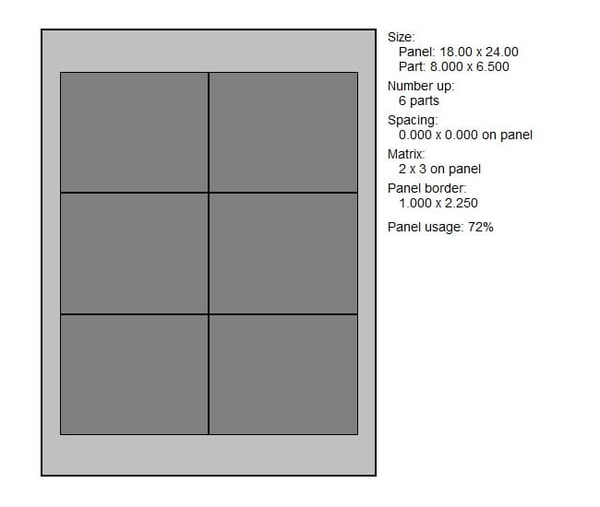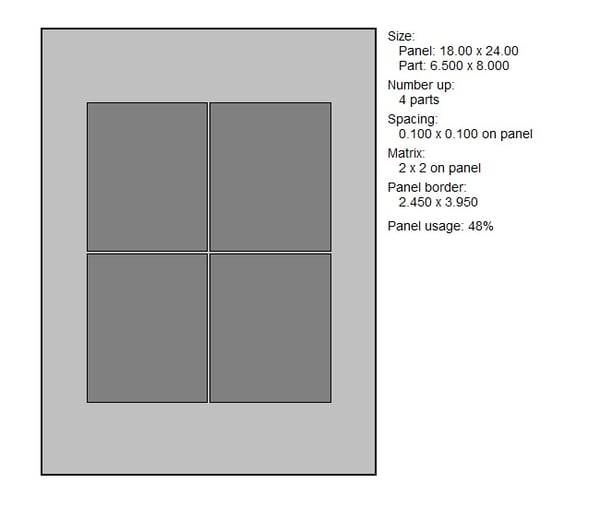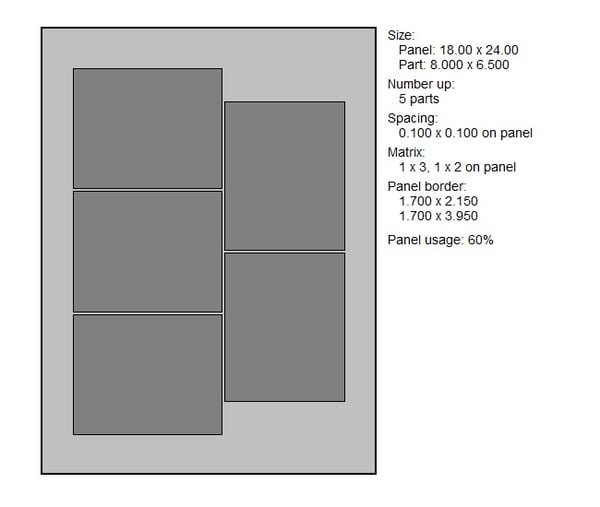As costs of materials, freight, and labor rise it has become imperative to seek out alternative ways to save costs in the manufacturing process. With traditional means of saving no longer as viable, we now must be more creative and specific when we’re asked, “what can I do to lower the cost of my printed circuit board (PCB)?”
PCB Data Review
With supplied data, often we can see the potential to save cost as well as easing manufacturing processing challenges. To reduce costs and save you time and hassle, here are a few suggestions to take into consideration during the design and layout stages that will initial PCB cost savings right from the start.
PCB Panelization Size Considerations
The average panel size produced in most production facilities is 18 x 24 inches. That’s not to say it is the only size but it is the most popular. Some larger and smaller sizes are used as well but let’s start with this as the standard size for cost savings.
When calculating panel usage for PCB builds, there are some areas needed on all four edges for tooling holes, coupons, pinning and camping - so figure 1” less on each side for production processing. This leaves you with 16 x 22 inches of panel usage for your product build.
How Does Knowing Panel Usage Help You Save Cost?
Depending on the size of your PCB length and width, the longest axis including any tabs or extended areas will allow you to calculate the number of parts per panel. The more parts we can fit on a single panel the less cost in square inches of material per unit and the fewer panels we must produce to make the order.
For example, a circuit board with the dimensions of 6.5” x 8” will fit six times on a panel if we are allowed to score the edges and not rout. Placing the PCBs up against each other and scoring them from the panel creates 72% usage.

PCB Panel Array with Scored Edges
If the customer prefers the edges of the PCB to be flat, smooth, and routed finish we must spread the PCBs apart by a minimum of 0.1” spacing to allow for the router to pass between the PCBs and not damage either board. Parts per panel is now four with the same orientation within the panel. Minus two pieces is 33.3% decrease to 48% usage.
 PCB Panel Array with Routed Edges
PCB Panel Array with Routed Edges
There are some cases where it’s decided to rotate parts to use more square inches of the material – increase usage and save cost. As shown in the figure below.
This process is at times costlier than cost actual savings. The same part can be placed five times on the same 18 x 24 however rotating two parts 90 degrees adds cost to tooling, programs, plating parameters, and in some cases results in more headaches and scrap than actual cost saving.
 PCB Panel Array with Increased Usage
PCB Panel Array with Increased Usage
We increased the usage by 12% however we will not know the savings until the parts are in final goods if it was worth the risk. Some of the time scrap rate increases and will cause a shortage in shipment causing more pain than the increased usage was worth.
Summary
When it comes to small PCB parts, creating an array with a consistent thought process in mind allows for the best manufacturing yield per panel. In many cases, parts must be routed. Keeping .1” between pieces and using a .25” rails to support the array is sufficient, increasing either waste area between the pieces or the waste rails is always an option.
Key Takeaways
- Panel size is key to cost efficiency: Standard production panels are 18 x 24 inches, but with edge allowances, usable area is about 16 x 22 inches. Maximizing parts per panel directly reduces unit cost.
- Scoring improves panel utilization: Allowing PCBs to be scored instead of routed can fit more boards per panel, increasing usage percentage and lowering cost per unit.
- Routed edges reduce panel yield: Requiring routed edges forces spacing between boards, lowering material usage efficiency and raising per-board costs.
- Rotating circuit boards aren’t always cost-effective: While rotating parts may increase material usage, it can also add tooling complexity, plating challenges, and higher scrap rates, which sometimes outweigh the savings.
- Consistent array design improves manufacturing yield: Small parts benefit from arrays with standard spacing and rail dimensions, which balance manufacturability with material efficiency.

















